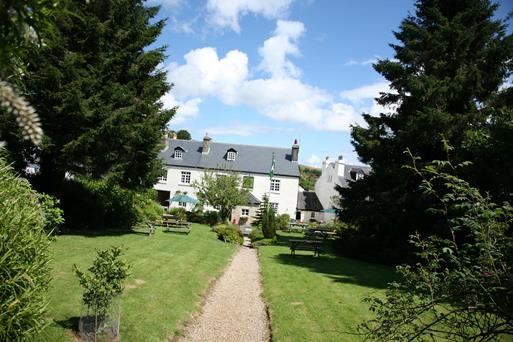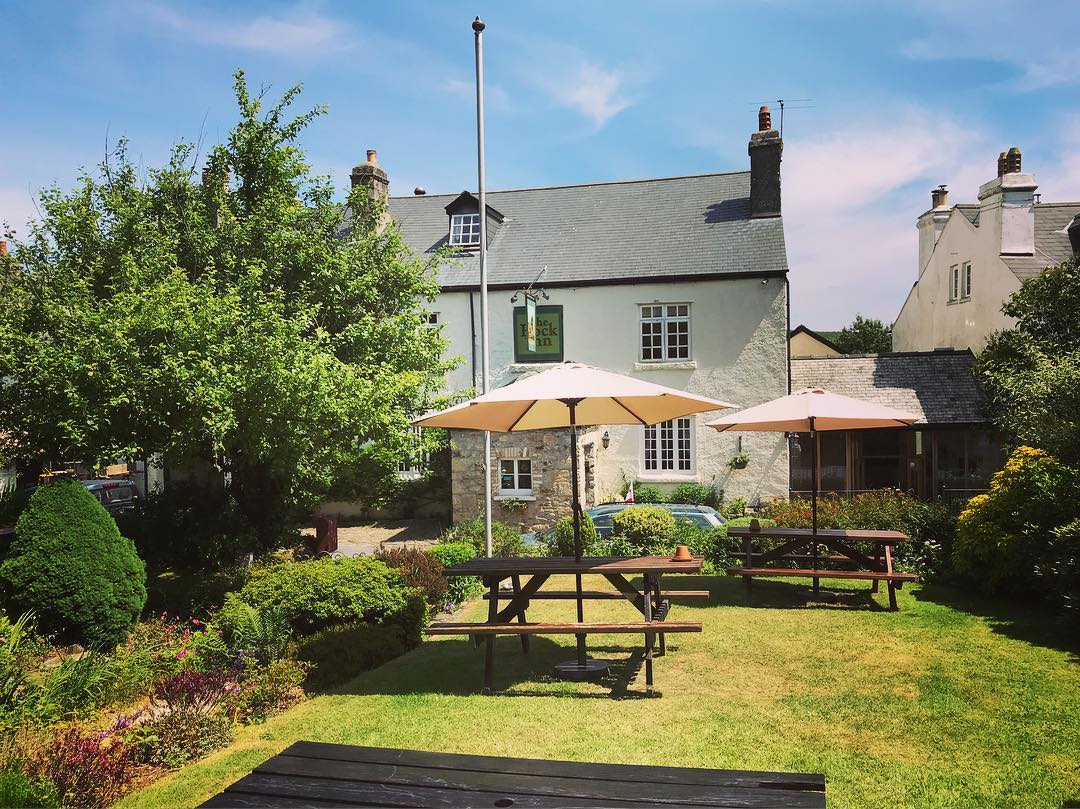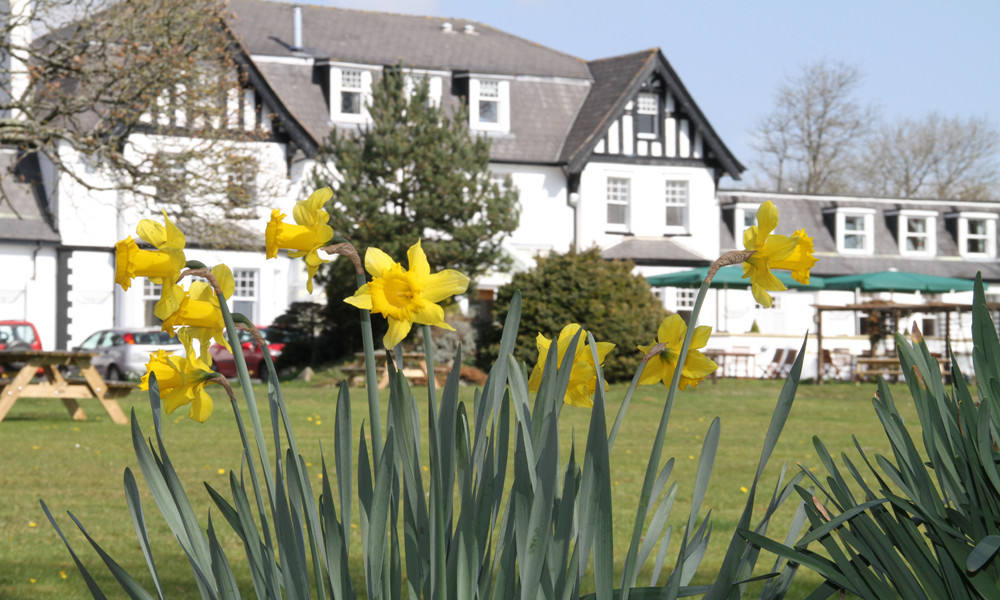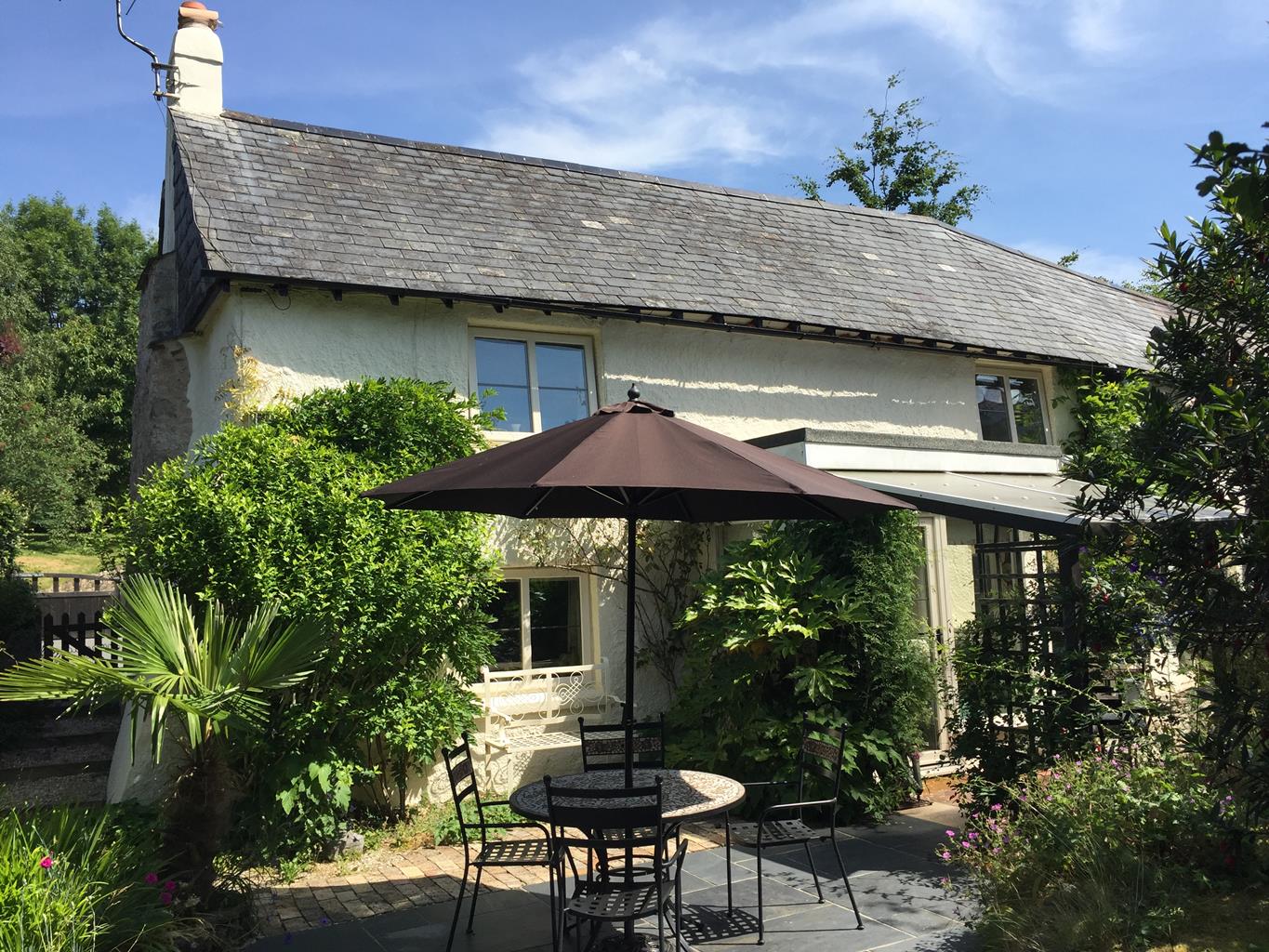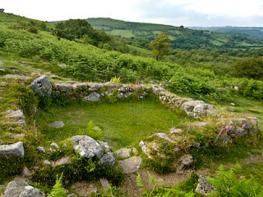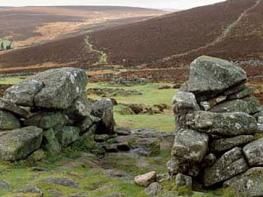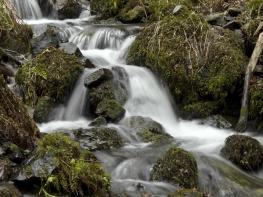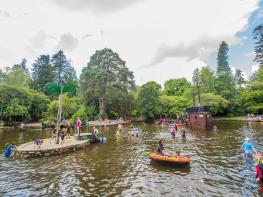Set at the base of Haytor on Dartmoor, The Moorland Hotel boasts 11 acres of landscaped grounds…
Haytor's Granite Tramway

Step back in time to the days when horse-drawn wagons rumbled along the Granite Tramway.
2.5 miles (4kms)
About the walk
Haytor Rocks (1,499ft/457m) has been Dartmoor’s most famous landmark since Victorian times, and the relatively easy walk up the slopes from the car park to the massive rocks attracts day trippers and holidaymakers all year round. However, there's a quieter, historically fascinating side to Haytor which is explored on this gentle route.
Haytor is sited on the southern edge of the moor, overlooking one of the best arrays of tors – impressive piles of weathered granite – on Dartmoor. On leaving the quarry (Point 4) you can see Cosdon Hill on the far northeast of the moor, and Hound Tor (nearer, left) and Smallacombe Rocks (right). In May, Holwell Lawn, towards Hound Tor, is a shimmering blue carpet of bluebells.
George Templer’s tramway
The tramway followed on this walk was built in 1820 by George Templer (1781–1843) to service his quarries at Haytor. This hugely ambitious project was proposed to link the quarries with the head of the Stover Canal, to carry clay from the family mines in the Bovey Basin to the sea at Teignmouth. The building of the tramway – 8.5 miles (13.7km) long, with a fall of 1,300ft (396m) – was prompted by an order to provide stone for the British Museum and the arches of London Bridge. The ‘rails’, which can be seen today, were cut from blocks of granite – teams of Shire horses hauled flatbed trucks up the tramway after the downhill run to the canal. By 1858 the quarries were no longer economic, and they were abandoned along with the tramway
The Templer Way
Today the Templer family’s Dartmoor heritage is celebrated by a waymarked 18-mile (29km) walking trail. It follows the course of the route used to export clay and granite, from Haytor to the south coast at Shaldon, opposite Teignmouth at the mouth of the River Teign.
Walk directions
From the car park take a narrow path towards Haytor (initially slightly to the left of the rocks), through low gorse. The path drops gently, soon passing through a small gully. Quarry spoil heaps soon come into view to the right of Haytor.
Meet a broader, grassy path (in which you can see granite setts, marking the line of the Haytor Granite Tramway) and turn right. The setts come and go, but look carefully and you will spot the odd one under grass to the right. A boggy area (left) marks the source of the River Lemon, which flows south to meet the River Teign in Newton Abbot. Look left to see Haytor Quarries.
Reach an obvious set of points (junction of granite setts) and a fork in the path. Now bear left to follow a branch line, which curves towards the left end of the quarry. Various bumps in the ground here indicate the site of cottages and a pub built by Templer for his workers. The tramway reaches a gap between two spoil heaps (a turning area), with views ahead towards the coast.
Immediately through the spoil heaps, look right to spot a small gully. Immediately past that, turn right up a narrow path that climbs along the left bank of the gully, soon meeting a wire fence. After 50yds (46m) turn right through a small wooden gate and follow the path past two quarry ponds, a haven of tranquillity. After the second pond, cross a stile and pass through the outer embankment.
Immediately bear left on a broad grassy path, with fine views towards Hound Tor. The path hits the tramway again, with Holwell Quarries left; keep ahead through low-growing gorse and heather. After 75yds (69m) meet a broader path and bear right towards Smallacombe Rocks, and as the path begins to climb gently, take the left fork of two paths, aiming for the right end of the rocks.
When level with the rocks, look left to find a broad path that runs away towards the horizon (immediately passing a hut circle), midway between Hole Rock (seen away to the left) and Haytor Rocks (right). Turn right (east-southeast) across Haytor Down, eventually dropping to the car park with views to the coast ahead.
Additional information
Level moorland paths
Open moorland
On lead in nesting season (1 March–15 July), and around quarries
OS Explorer OL9 Dartmoor
Unmarked car park (free) on Haytor Down
At bottom Haytor car park
<p>Do not attempt this route in misty weather; numerous paths, so follow directions carefully; in quarries supervise small children and put dogs on lead</p>
WALKING IN SAFETY
Read our tips to look after yourself and the environment when following this walk.
Find out more
Also in the area
About the area
Discover Devon
With magnificent coastlines, two historic cities and the world-famous Dartmoor National Park, Devon sums up all that is best about the British landscape. For centuries it has been a fashionable and much loved holiday destination – especially south Devon’s glorious English Riviera.
Close to the English Riviera lies Dartmoor, one of the south-west’s most spectacular landscapes. The National Park, which contains Dartmoor, covers 365 square miles and includes many fascinating geological features – isolated granite tors and two summits exceeding 2,000 feet among them.
Not surprisingly, in Dartmoor the walking opportunities are enormous. Cycling in the two National Parks is also extremely popular and there is a good choice of off-road routes taking you to the heart of Dartmoor and Exmoor. Devon’s towns and cities offer stimulating alternatives to the rigours of the countryside.
Nearby stays
Restaurants and Pubs
Nearby experiences
Recommended things to do
Why choose Rated Trips?
Your trusted guide to rated places across the UK
The best coverage
Discover more than 15,000 professionally rated places to stay, eat and visit from across the UK and Ireland.
Quality assured
Choose a place to stay safe in the knowledge that it has been expertly assessed by trained assessors.
Plan your next trip
Search by location or the type of place you're visiting to find your next ideal holiday experience.
Travel inspiration
Read our articles, city guides and recommended things to do for inspiration. We're here to help you explore the UK.


